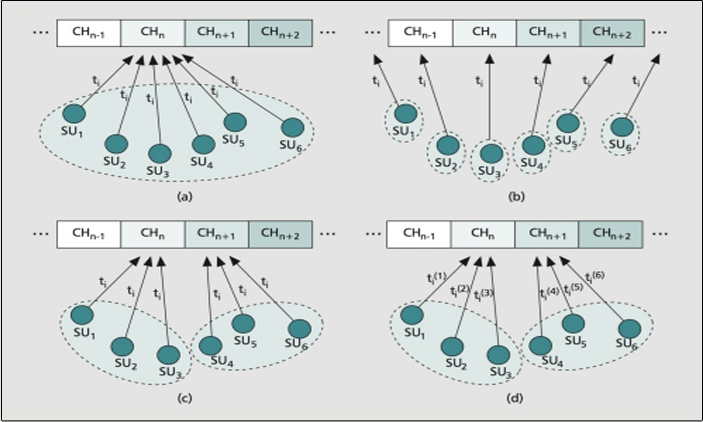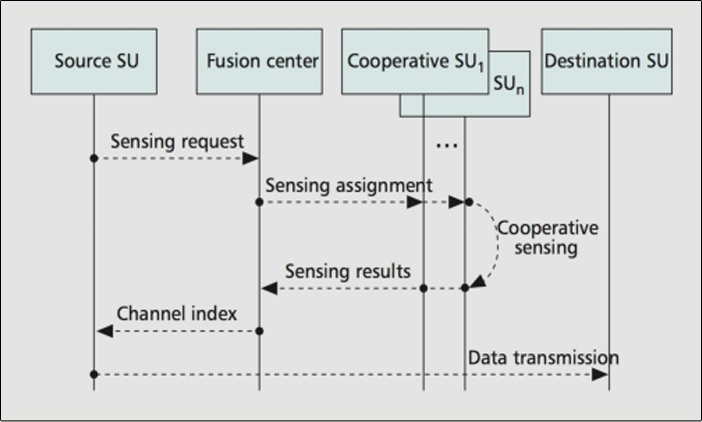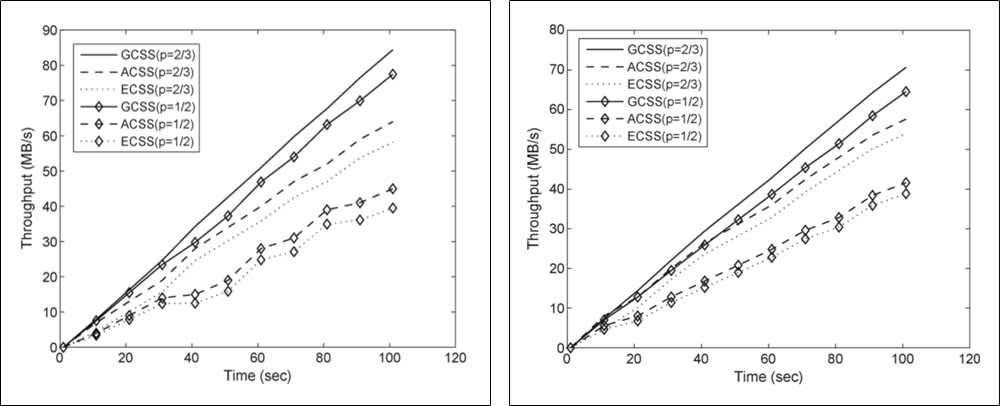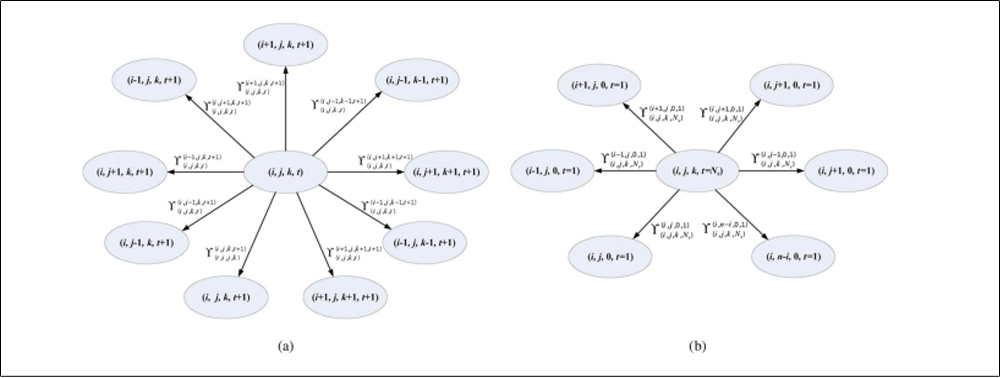■ Cooperative Spectrum Sensing in Cognitive Radio Networks
Cooperative spectrum sensing is a promising technique in cognitive radio networks by exploiting multi-user diversity to mitigate channel fading. Cooperative sensing is traditionally employed to improve the sensing accuracy while the sensing efficiency has been largely ignored. However, both sensing accuracy and efficiency have very significant impacts on the overall system performance. In our work, we first identify the fundamental trade-off between sensing accuracy and efficiency in spectrum sensing in cognitive radio networks. Then, we present several different cooperation mechanisms, including sequential, full-parallel, semi-parallel, synchronous, and asynchronous cooperative sensing schemes. The proposed cooperation mechanisms and the sensing accuracy-efficiency trade-off in these schemes are elaborated and analyzed with respect to a new performance metric achievable throughput, which simultaneously considers both transmission gain and sensing overhead. Illustrative results indicate that parallel and asynchronous cooperation strategies are able to achieve much higher performance, compared to existing and traditional cooperative spectrum sensing in cognitive radio networks.

Fig. 1 Illustration of cooperation mechanisms:
a) sequential cooperative sensing; b) full-parallel cooperative sensing;
c) semi-parallel cooperative sensing; d) asynchronous cooperative sensing.

Fig. 2 Procedure of cooperative spectrum sensing.
■ Efficient MAC Protocol for Cognitive Radio Networks
In cognitive radio (CR) networks, spectrum sensing is a crucial technique for discovering spectrum opportunities for secondary users (SUs). The quality of spectrum sensing is evaluated by both sensing accuracy and sensing efficiency. Here, sensing accuracy is represented by the false-alarm probability and the detection probability, whereas sensing efficiency is represented by the sensing overhead and network throughput. To address the problem, we propose a group-based cooperative medium access control (MAC) protocol called GC-MAC, which addresses the tradeoff between sensing accuracy and efficiency. In GC-MAC, the cooperative SUs are grouped into several teams. During a sensing period, each team senses a different channel while SUs in the same team perform the joint detection on the targeted channel. The sensing process will not stop unless an available channel is discovered. To reduce the sensing overhead, an SU-selecting algorithm is presented to choose selectively the cooperative SUs based on the channel dynamics and usage patterns. Then, an analytical model is built to study the sensing accuracy–efficiency tradeoff under two types of channel conditions: a time-invariant channel and a time-varying channel. An optimization problem that maximizes achievable throughput is formulated to optimize the important design parameters. Both saturation and non-saturation situations are investigated with respect to throughput and sensing overhead. Simulation results indicate that the proposed protocol is able to significantly decrease sensing overhead and increase network throughput with guaranteed sensing accuracy.

Fig. 3 Flow chart of the proposed MAC protocol.

Fig. 4 Performance evalution in terms of throughput in different conditions.
■ Hybrid Spectrum Access in Cognitive Radio Networks
Spectrum access scheme is an important issue that has essential impact to the spectrum utilization and the Quality-of-Services (QoS) in cognitive radio networks. We consider the spectrum access in cognitive-radio-based smart grid networks as an example. A new spectrum access paradigm called hybrid spectrum access (HSA) is proposed, in which both licensed and unlicensed spectrum bands are intelligently scheduled for the transmission of smart-grid services. The admission control problem under HSA is deliberately investigated. Furthermore, the impact of spectrum sensing error on the performance of HSA is analyzed by using a multidimensional Markov chain. Regarding the practical applications of the smart grid, two optimization problems, namely, cost-driven spectrum leasing and QoS-driven spectrum management, are formulated. Numeric results indicate that the HSA strategy is able to significantly improve the QoS of the smart-grid services, save the cost in spectrum leasing, and maintain the system interference at a sufficiently low range.

Fig. 5 Time sequence of the proposed hybrid spectrum access scheme.

Fig. 6 Markov analysis diagram for the proposed scheme.





